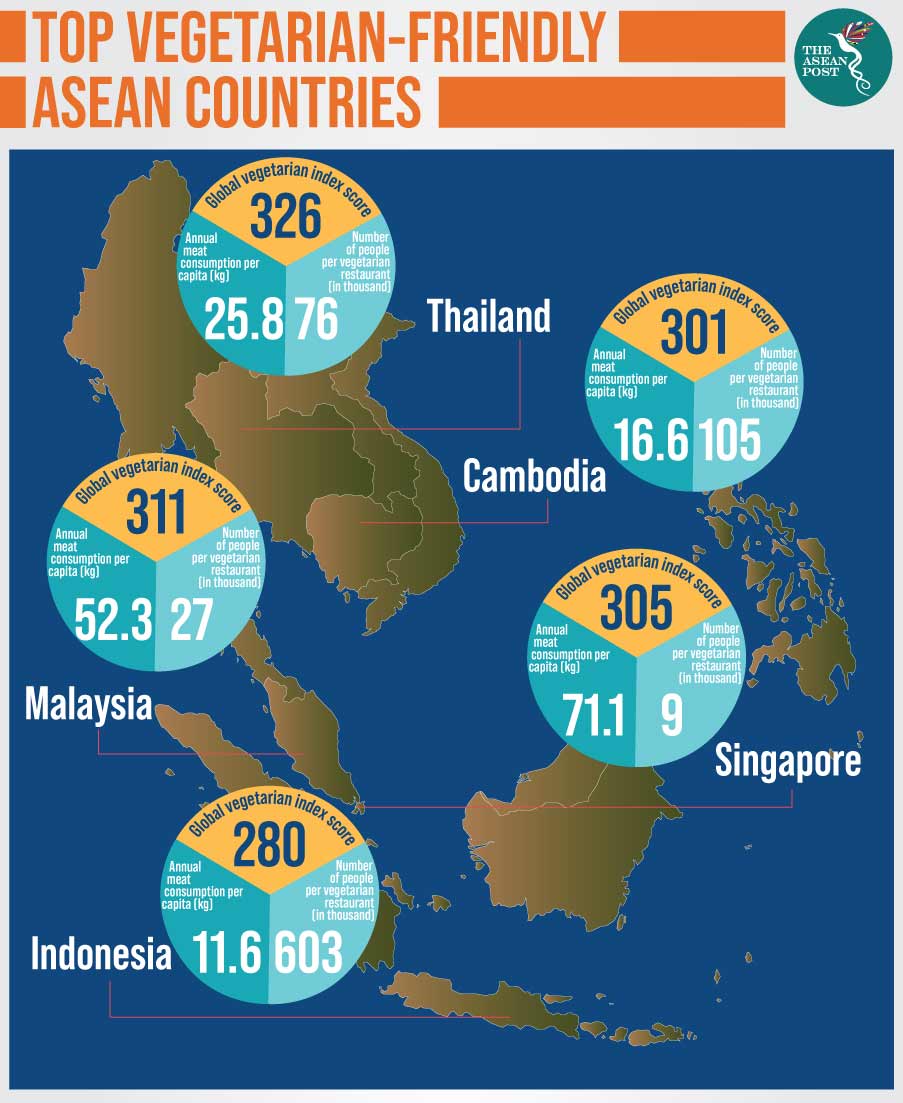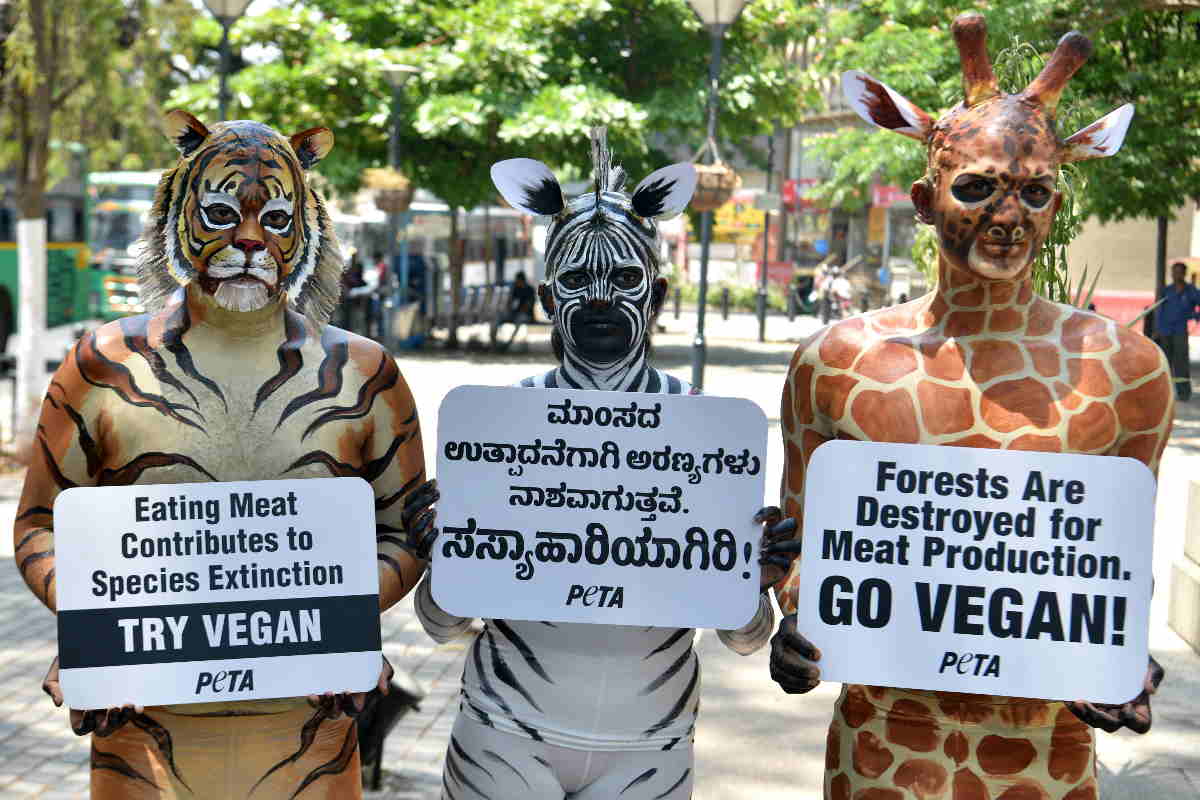Today, people are more conscious about what they eat, reading up on the ingredients used and wanting to know where their food is sourced from. People are also more informed of the food system which is responsible for more than a quarter of all greenhouse gas (GHG) emissions, unhealthy diets and high body weight which are among the greatest contributors to premature mortality.
As reported by the United Nations (UN) Food and Agriculture Organization (FAO), 30 percent of the Earth’s landmass is used to raise animal food. Livestock farming contributes to global warming, where clearing land for pastures releases carbon dioxide (CO2) at a staggering rate. Animals also consume more food than they produce and animal farming can be a threat to our water supply. The pressure on the environment is forcing consumers and companies to rethink their consumption habits.
Millennials driving the trend
Researchers at the Oxford Martin School in 2016 highlighted that a diet transition towards plant-based food could save up to eight million lives and reduce food-related greenhouse gas emissions by 70 percent. The research titled, ‘Analysis and valuation of the health and climate change co-benefits of dietary change,’ by Marco Springmann et al., found that the switch could also lead to climate and healthcare-related savings of US$1.5 trillion.
There is already a global movement towards a plant-based diet in recent years. According to a GlobalData consumer survey between 2017 to 2018, at least 70 percent of the world’s population is either reducing meat consumption or leaving meat off the table altogether. The data and analytics company found an increase of 61 percent of global consumers who identified themselves as vegan in 2017. The number of vegans is also expected to grow due to the diet’s visibility in popular culture via social media, celebrities and online influencers.
Millennials and young generation Zs’ are raising awareness of the impact of meat consumption. This in turn is driving growth in the number of people opting for a vegetarian or vegan diet. Fiona Dyer, GlobalData’s consumer analyst, said that “the shift toward plant-based foods is being driven by millennials, who are most likely to consider the food source, animal welfare issues, and environmental impacts when making their purchasing decisions.”
Non-animal protein
A 2018 research by global market intelligence agency, Mintel, revealed that as many as 39 percent of urban Indonesians and 34 percent of urban Thais consumed more non-animal sources of protein in 2017, compared to the previous year. But how easy is it to be vegetarian or vegan in Southeast Asia, as meat and dairy can lurk in unexpected places in the region’s food.
Oliver’s Travels, an accommodation booking website, ranked countries around the world by how ‘vegetarian-friendly’ they are based on the number of vegetarian restaurants, the number of vegetarian restaurants to population size, and the annual meat consumption per capita.

In the research, Thailand and Malaysia were ranked second and third respectively after Seychelles. According to the study, Thais only eat 25.8 kilograms (kg) of meat per year and have access to 908 vegetarian restaurants. Thais also observe a flesh-free diet in the month of October, in conjunction with a Chinese Buddhist tradition. Although Malaysians enjoy eating meat with 52.3 kg consumed each year on average, the nation boasts the most vegetarian joints in the region with 1,185 outlets.
Singapore ranked sixth with Cambodia in seventh place. Buddhist Cambodians eat very little meat at only 15.5 kg per year, but the low ranking is due to the fewer number of dedicated vegetarian restaurants, at just 153.
Plant-based food companies like Hungryroot in Singapore and Kawkawveg in Malaysia, are entering the market through meal kits and meal deliveries, to conveniently offer consumers with more vegetarian and vegan options.
The trouble with fake meat
There is a new wave of eateries offering wholly vegetarian and vegan options with ‘fake-meat’ products and the sector is rapidly growing. Although animals provide protein which is essential for humans, many plant foods contain a high amount of protein per serving, like tofu, chickpeas and lentils. Fake meat is usually made from tofu, mushrooms and other vegetable or fruit but it could also be manufactured with additional unhealthy additives, making the ever-growing enthusiasm for the product somewhat tricky.
The contradiction that comes with healthy eating for vegetarians and vegans is the idea that mock meats are “highly processed food”, and there is nothing particularly healthy about a vegan hotdog or burgers. Vegan hotdogs are just another form of overly processed industrial foods.
“A vegan hotdog is probably no better for you than a meat one,” says Renee McGregor, a registered dietitian and author of the book, Training Food. “The key thing is that any food that has been highly processed should be eaten mindfully – so not necessarily avoided completely, but I wouldn’t recommend a vegan sausage weekly due to the high salt content and most likely list of additives and preservatives,” says McGregor.
However, due to developments in food technology, the resemblance of fake meats to the real one has become uncanny in both, texture and appearance. Although ethical and sustainable food sources benefit the planet and ensure humane treatment of animals, perhaps it is the meat-free versions of animal proteins, from ‘flaky’ fish to oozing beetroot burgers that could encourage consumers to eat more plant-based food.
Related articles:
